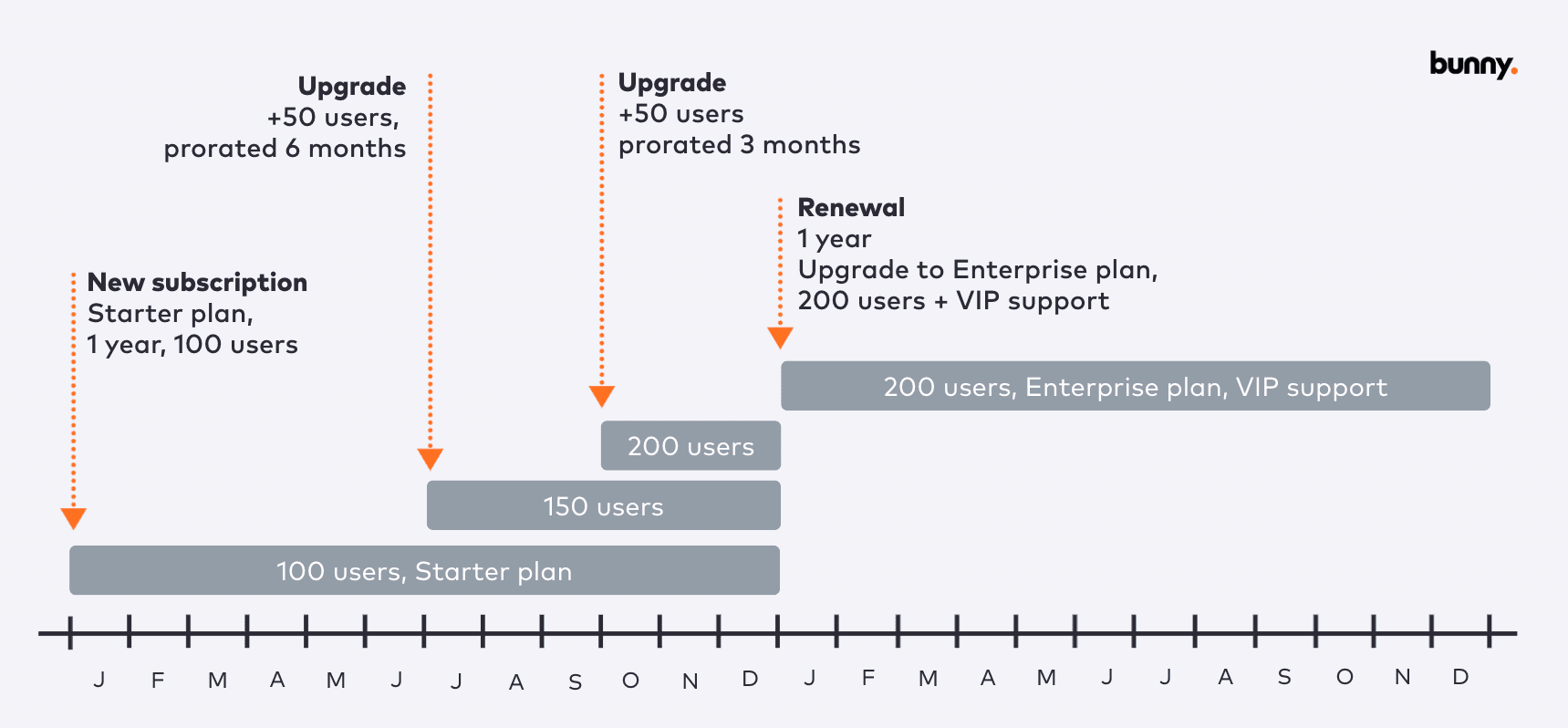
The CPQ tipping point

When the first salesperson joins, you are probably still experimenting with pricing. Even if you have a PLG motion going, the price salespeople will get for larger deals can be very different. If your product costs $20 per user per month, customers will be fine with paying that for 10-50 users. But when an enterprise with 500 or 1000 users comes along, they will expect a hefty discount.
At my previous company we had customers with hundreds of thousands of users and they were getting over 90 percent discount. The percentage hurts a little bit, but having a seven-figure ARR customer feels really good.
Once you hire the first sales manager, sales quotes are probably still being done in spreadsheets or documents. It’s fascinating how quickly quotes morph over time. Each salesperson will add their own personal touches and after a while, quotes from two different people will look like day and night.
This is when it’s time to streamline quoting. The CPQ process ensures consistent pricing, discounting control and standardized SKUs and terms. I have seen salespeople close deals that we couldn’t even configure in our product and financial terms so complicated that every upgrade or renewal required extensive spreadsheet work.
Clean deals means clean data and that sets you up for future success. When the customer wants to add more seats or upgrade to a bigger plan, the process is straightforward. Account management will have no problem processing renewals. Finance doesn’t have to jump through hoops to recognize the revenue.
Bottom line, both customer and vendor benefit from a streamlined quoting process because it eliminates mistakes and provides a consistent and smooth customer experience.
Bunny was designed from the ground up to optimize RevOps processes. Even if you don’t need quoting today, you can get started with billing, self-service and analytics and when the time comes, quoting is instantly available with zero configuration required.
Remember, it’s never too early to focus on data cleanliness. Dirty data tends to hang around for a long time and pollute operations to the detriment of everyone involved in revenue operations.

